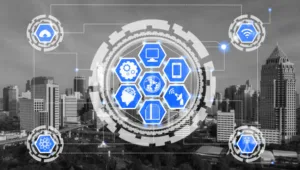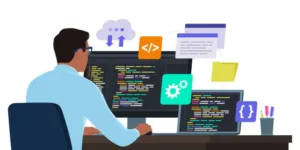In the modern-day unexpectedly evolving digital panorama, companies frequently find themselves careworn with legacy systems that do not meet their evolving desires. Legacy structures, in particular web forms, may be previous, inefficient, and hard to maintain. To live competitively and meet the needs of present-day users, companies need to include the transformation of their legacy structures through migration and software program re-engineering. This article explores strategies for successful net forms migration and software re-engineering, addressing making plans, navigating complexity, danger mitigation, and non-stop improvement.
Planning for Success: Developing a Comprehensive Migration and Re-Engineering Strategy
Planning for success in transforming legacy systems through migration and software program re-engineering calls for a meticulous and complete method that lays the foundation for a successful outcome. The first step in growing a comprehensive migration and re-engineering strategy is to define the goals and goals of the transformation. This includes conducting a thorough assessment of the front-end legacy machine and determining its strengths and weaknesses, as well as determining that we want to migrate asp.net web forms to asp.net core for example. Engaging key stakeholders and challenging remembering specialists is important during this section to ensure that the method aligns with commercial enterprise requirements and person expectancies.
The subsequent critical element of the strategy is to create an in-depth roadmap that outlines the collection of tasks, assets needed, and timelines for each segment of the transformation method. This roadmap serves as a guide for the entire undertaking team, facilitating clean communication and making sure that everybody is on the same page. Additionally, the approach ought to include a risk evaluation to identify capacity-demanding situations and develop mitigation plans to cope with them efficiently. It is essential to proactively assume and control dangers to limit the effect on the mission timeline and price range.
Moreover, the strategy needs to define clear metrics and key performance indicators (KPIs) to determine the success of the transformation. By setting up quantifiable goals and milestones, organizations can music progress and make information-driven decisions at some stage in the mission. A complete migration and re-engineering strategy must additionally prioritize person testing and validation to make sure that the transformed device meets the needs and expectancies of cease-customers.
By incorporating user comments early and iteratively in the course of the procedure, corporations can great-track the gadget to supply a seamless and intuitive personal experience. Overall, a well-advanced approach is essential for effectively navigating the complexities of legacy systems transformation and reaching the desired results of stepped-forward performance, better capability, and accelerated commercial enterprise cost.
Navigating Complexity: Overcoming Challenges in Legacy Systems Transformation
Navigating the complexity of legacy systems is a full-size challenge when challenging their transformation through migration and software re-engineering. Legacy structures frequently encompass heterogeneous technologies, numerous programming languages, and intricate dependencies that can complicate the transformation process.
To overcome those demanding situations, corporations have to behavior a complete evaluation of the prevailing system, figuring out ache factors, integration factors, and ability risks. This analysis facilitates in expertise on the capability influences on information integrity, safety, and compliance necessities. Managing these complexities calls for a scientific method that addresses each aspect of the transformation, from making plans and evaluations to facts migration and trying out.
Additionally, effective communication and collaboration with stakeholders and challenge experts are critical to ensure alignment with enterprise desires and consumer expectations. By properly navigating the complexities of legacy structures, organizations can mitigate risks, minimize disruptions, and, in the long term, achieve successful transformation and become more efficient in their work.
Risk Mitigation Tactics: Safeguarding Against Disruptions in System Transformation
Risk mitigation approaches are important in safeguarding against disruptions all through gadget transformation. When assigning a migration and software re-engineering mission, corporations face diverse dangers that could affect timelines, budgets, and typical fulfillment. By identifying capacity risks early on and growing mitigation techniques, corporations can proactively deal with and reduce their impact. One effective tactic is to conduct a radical danger evaluation, analyzing elements including technical dependencies, facts integrity, protection vulnerabilities, and useful resource constraints.
This assessment helps in figuring out capacity dangers and their capability results. Once risks are identified, groups can enforce strategies to mitigate them, which include imposing backup and healing systems, engaging in frequent testing and validation, and establishing contingency plans. Effective verbal exchange and stakeholder engagement also are essential for hazard mitigation, as they allow well-timed trouble identification and backbone. Regular status updates, clear communication channels, and collaboration with difficult experts can assist in addressing dangers directly.
Additionally, corporations need to establish measures to monitor and examine the effectiveness of chance mitigation techniques, permitting non-stop improvement during the transformation technique. By enforcing sturdy danger mitigation tactics, groups can decorate their probabilities of a hit gadget transformation, ensuring minimum disruptions and the finest results.
Continuous Improvement: Post-Transformation Optimization and Maintenance Strategies
Continuous improvement is critical in submit-transformation optimization and preservation strategies. Once a legacy system has been efficiently transformed through migration and software re-engineering, businesses should focus on optimizing and retaining the brand-new device to ensure its ongoing effectiveness and performance. One key thing of continuous development is amassing comments from stop-customers and stakeholders to discover regions for in addition enhancement and refinement.
These comments may be used to prioritize and put in force updates, improvements, and new capabilities that align with evolving enterprise needs and personnel requirements. Regular monitoring and overall performance analysis also are essential for identifying potential bottlenecks, device vulnerabilities, and opportunities for optimization. Organizations should establish metrics and key overall performance signs (KPIs) to degree the gadget’s performance, enabling records-pushed selection-making and targeted enhancements. Maintaining strong communication channels with IT and aid groups is vital for directly addressing any issues or bugs that can arise. Regular device protection, consisting of security updates and patches, is crucial for safeguarding the integrity and protection of the system.
Additionally, businesses need to invest in non-stop training and upskilling in their body of workers to make certain they’re ready with the necessary knowledge and skills to successfully utilize and maximize the gadget’s abilities. By prioritizing non-stop improvement, companies can ensure that the converted system keeps fulfilling commercial enterprise goals, adapts to converting wishes, and supplies long-term value.
Conclusion
Transforming legacy structures, especially net bureaucracy, is important for corporations to live aggressively in the digital age. By growing a comprehensive method, navigating complexity, mitigating risks, and embracing non-stop improvement, groups can correctly migrate net forms and re-engineer software programs. This transformation will bring about progressed gadget efficiency, more desirable consumer revel, and multiplied commercial enterprise agility. While the adventure can be difficult, with the right plans, strategic execution, and a commitment to ongoing optimization, businesses can free up the whole ability of their legacy systems and thrive in an ever-evolving digital landscape.
Also Read:
Choosing the Right Partner for Custom Software Product Development Services
The Development & Role of ACD Phone System for Call Tracking Software



